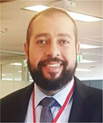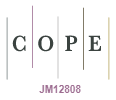Primary cementing practices and compliance in Queensland’s petroleum wells
Ahmed Harfoush A * and Chris Barrand AA

Ahmed Harfoush is a Petroleum Engineer (Wells) within the Petroleum and Gas Inspectorate at Resources Safety & Health Queensland. He has over 15 years of diverse experience in the petroleum industry, specialising in well operations, including primary cementing, plug and abandonment, well integrity, safety management systems, regulatory compliance, and risk management. He is also the Co-chair of the Well Integrity Special Interest Group for the Society of Petroleum Engineers Queensland Section. Ahmed holds an MSc in Petroleum Engineering from Heriot-Watt University, is a Chartered Professional Engineer, and a Registered Professional Engineer of Queensland (RPEQ). |

Chris Barrand serves as the Executive Petroleum Engineer (Well Operations) within Resources Safety & Health Queensland since July 2022. He has 18 years’ experience in upstream oil and gas operations in Australia and Africa. Chris has held roles in both operating and service companies, focussed on drilling and completions operations, well construction and stimulation, completion and ALS technologies. Chris holds a Bachelor’s in Engineering (Petroleum Engineering), is an active member of the Society of Petroleum Engineers, and the Chairperson of the SPE Queensland Chapter. |
Abstract
Primary cementing is a crucial aspect of petroleum well construction, ensuring long-term well integrity, preventing fluid migration, and protecting groundwater. In Queensland, Resources Safety & Health Queensland (RSHQ) Petroleum and Gas Inspectorate enforces the Code of Practice for the construction and abandonment of petroleum wells and associated bores in Queensland, which outlines engineering and technical requirements for well construction and abandonment. Between January 2020 and December 2023, industry operators drilled 2541 wells and reported 43 failures to meet primary cementing objectives (FTMCOs), prompting the Inspectorate to conduct industry-wide audits. The audits focussed on compliance with cementing practices, formal safety assessments, slurry design, laboratory testing, verification procedures, and factors contributing to slumping and failure to reach the designed top of cement (TOC). Key findings highlighted gaps in formal safety assessments, a tendency to delegate cement slurry design to contractors without rigorous technical oversight, and inconsistencies in laboratory testing documentation. Additionally, verification procedures were not always aligned with regulatory requirements, and cement losses presented significant challenges towards the slumping and TOC deficiencies. To enhance primary cementing practices, the paper recommends strengthening oversight of cementing contractors’ technical capabilities, improving verification procedures, and ensuring consistent comprehensive risk assessments. Aligning cement verification procedures with regulatory requirements and adopting best practices for mitigating cement losses will improve well integrity and regulatory compliance.
Keywords: audits, bulk shrinkage, cement excess, cement losses, cement slurry design, cementing best practices, cementing contractors, coal seam gas, Code of Practice, depleted zones, failure to meet cementing objectives, formal safety assessment, laboratory testing, lost circulation materials, petroleum wells, primary cementing, regulatory compliance, risk assessment, slumping, Surat Basin, top of cement, verification procedures, zonal isolation.
 Ahmed Harfoush is a Petroleum Engineer (Wells) within the Petroleum and Gas Inspectorate at Resources Safety & Health Queensland. He has over 15 years of diverse experience in the petroleum industry, specialising in well operations, including primary cementing, plug and abandonment, well integrity, safety management systems, regulatory compliance, and risk management. He is also the Co-chair of the Well Integrity Special Interest Group for the Society of Petroleum Engineers Queensland Section. Ahmed holds an MSc in Petroleum Engineering from Heriot-Watt University, is a Chartered Professional Engineer, and a Registered Professional Engineer of Queensland (RPEQ). |
 Chris Barrand serves as the Executive Petroleum Engineer (Well Operations) within Resources Safety & Health Queensland since July 2022. He has 18 years’ experience in upstream oil and gas operations in Australia and Africa. Chris has held roles in both operating and service companies, focussed on drilling and completions operations, well construction and stimulation, completion and ALS technologies. Chris holds a Bachelor’s in Engineering (Petroleum Engineering), is an active member of the Society of Petroleum Engineers, and the Chairperson of the SPE Queensland Chapter. |


